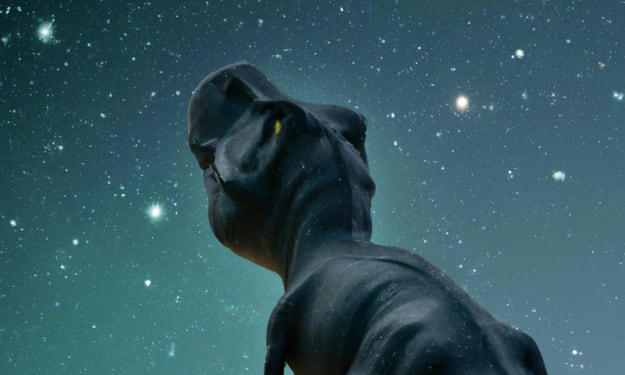
Just like humans, plaque forms on pets' teeth after eating, thanks to saliva, food and bacteria in their mouths. Dental plaque is a yellowish goo that can lead to bad breath in dogs and cats if you don't brush your teeth in time, and it can accumulate for too long and form calculus.
If calculus is allowed to build up, it can lead to more serious gum disease and even tooth necrosis. At this time, bad breath is a small matter, pets can not eat, pain but can not speak, sick more than... The problem is serious.
Therefore, pets also need to go to the hospital to see teeth, teeth cleaning, but there is an important difference between pet teeth cleaning and human teeth cleaning - general anesthesia is required. Anesthesia is risky, but "clean teeth without anesthesia" can be even more dangerous.
1, general anesthesia to avoid pet struggle, accidental injury
When dental plaque turns into calculus, calculus is attached to the tooth surface, and in order to remove the calculus that is difficult to clean, sharp scraper is an essential tool in the process of cleaning teeth.
A lot of dogs and cats wouldn't even be able to handle brushing their teeth, and they can't stand being taken to a strange hospital where a stranger is scraping a metal instrument that makes a strange sound in their mouth. Without anesthesia, pets will struggle and fight back in fear.
Not to mention the stress response and psychological shadow this may cause to the pet, at this point, the sharp dental tool becomes a sharp tool full of uncertainty, the pet even a little movement may be stabbed and scratched by the dental tool. The upper molars are even closer to the eyeballs, which can be poked during a struggle. Without anesthesia, not only the pet can be injured, but the person cleaning the teeth can also be scratched and bitten.
2. General anesthesia can clean the oral cavity more comprehensively and thoroughly
Under anesthesia, the pet is completely relaxed and "actively cooperate" with the examination and treatment. The veterinarian has enough time and space to carry out a thorough oral examination of the pet, including teeth measured in the mouth and teeth under the gums.
In order to more accurately measure the health of the teeth and create treatment plans, doctors also need to take an X-ray of the pet's mouth before cleaning the teeth, which can only be done under general anesthesia.
In addition to cleaning the visible surface of the tooth, the professional and complete dental cleaning process also includes cleaning the area below the gum where the tooth is in contact. People can understand the necessity of clean teeth, also understand why the dentist want us to open his mouth and crunching, many appliances in our mouth so you can endure the fear and discomfort while cooperate with clean teeth, however, want to let the cat and dog with all the way, motionless mouth let doctors clean teeth and gums every surface, can be said to be insane.
Therefore, without anesthesia, pet dental cleaning is very limited, and veterinarians or beauticians can only clean calculus that is easily seen by the eyes and can be easily removed if the animal does not cooperate. As a result, the whole mouth is not really cleaned, and invisible stones and dirt between the gums and teeth simply cannot be removed. Anesthesia allows doctors to clean and treat every tooth, and every corner of the gum, accurately and efficiently to a standard of beauty and health.
3, general anesthesia to prevent pets from inhaling debris
Dental cleaning, tooth extraction and other operations will use water, if there is no anesthesia, pets in the process of emergency struggle may be dental cleaning water mixed with bleeding caused by dental cleaning, cleaning down the tooth stone and other impurities inhaled. These substances can be inhaled into the respiratory tract and can cause severe inflammation in the lungs and associated tissues, posing a threat to your pet's health. However, in standard general anesthesia surgery, this risk is reduced.
The gas is injected into the animal through an endotracheal tube with a "balloon". The balloon's job is to keep the animal's airway safe and open during anesthesia. If there are dental stones that want to flow into the lungs with the cleaning, the little balloon will try to keep them out as much as possible, preventing them from flowing deep into the trachea. While small accidental inhalations may be unavoidable, they are still safer than large inhalations during a struggle.
4. Avoid pet resistance to tooth cleaning
The fear and struggle of waking up without anesthesia makes the pet even more resistant to being touched in the mouth, making it even harder to brush the pet's teeth later.
Veterinary professional organizations such as the American Veterinary Medical Association (AVMA) and the Association of Animal Hospitals (AAHA) emphasize that pet teeth cleaning must be anesthetized. According to the AAHA's 2019 Dental Care Guidelines for Dogs and Cats, non-veterinarians such as cosmetologists are not allowed to shave pets' teeth. The implementation of pet dental cleaning requires the following conditions: a trained veterinarian, a comprehensive preoperative examination, a professional clinical environment, anaesthetized pets, and close real-time monitoring.





Comments
There are no comments for this story
Be the first to respond and start the conversation.